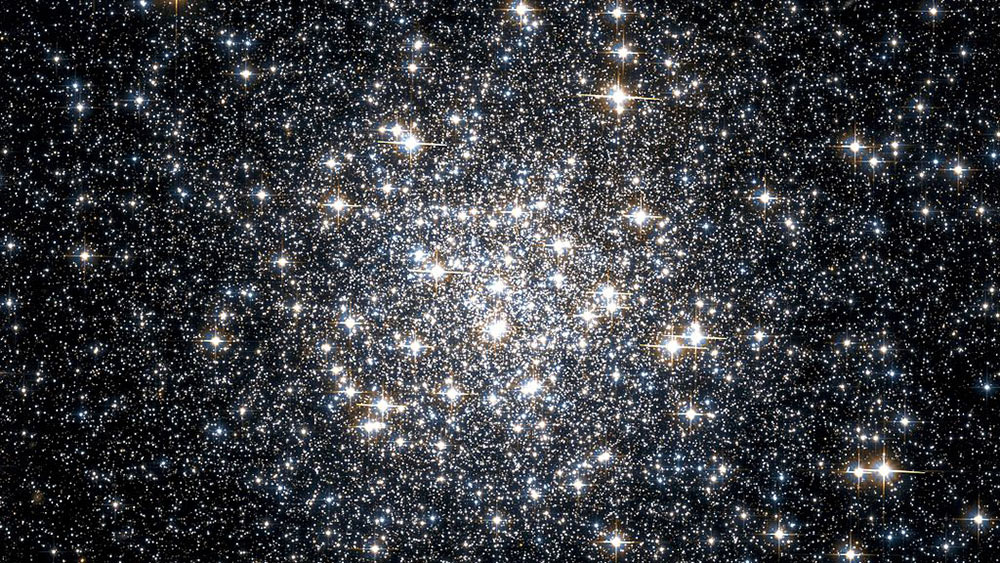Messier 56 is a globular cluster in the constellation Lyra. It is best viewed in late summer through early autumn.
While M56 appears spectacular in astrophotos, it is actually a dimmer globular cluster. This grouping of stars is around 84 light-years in diameter. What’s more, it’s one of the older known globulars in our galaxy, and at the same time, it’s screaming toward the earth at around 345,000 miles per hour!
The cluster is best observed using a telescope, as its stars are too faint to be seen with the naked eye or even with binoculars. However, even small telescopes can reveal the cluster’s compact core and its many individual stars.
My Observations
| Date | October 2, 2020 |
| Time | 8:52 p.m. |
| Location | Seattle, WA |
| Magnification | 169x |
| Scope | Meade 8″ SCT |
| Eyepiece | 12mm |
| Seeing | Below Average |
| Transparency | Average |

M56 is a faint globular cluster in my 8-inch scope. I’m unable to make out individual stars, except for one bright one near the bottom left. A full moon is rising tonight, so the sky is washing out more by the minute. Even with the competing moon, I’m glad I can still see a wisp of M56. I understand the Milky Way could have acquired M56 during a galaxy merger. I look forward to reexamining the cluster in the future on a moonless night.
Key Stats
| Constellation | Lyra |
| Best Viewing | Late Aurumn |
| Visual Magnitude | +8.3 |
| Absolute Magnitude | -6.6 |
| Distance from Earth | 31,000 ly |
| Diameter | 78 ly |
| Apparent Size | 8.8 arcmin |
| Milky Way Location | Orion Arm |
| My Viewing Grade | B |
Historical Observations
January 23, 1779, observation by Charles Messier
“On the 19th [of January, 1779], when observing the Comet [C/1779 A1 Bode, Messier’s 17th comet], I saw at little distance of it, and on its parallel, a very faint nebula, which one cannot perceive without a refractor, the dusk then prevented me to determine its position: In the morning of the 23rd, I have compared it directly with the second star of Cygnus of the fifth magnitude.”
Sources and Notes
Messier 56 by the Hubble Space Telescope. 3.6′ view from NASA. This file is in the public domain because it was created by NASA and ESA.
Charles Messier Observations: SEDS Messier Database
